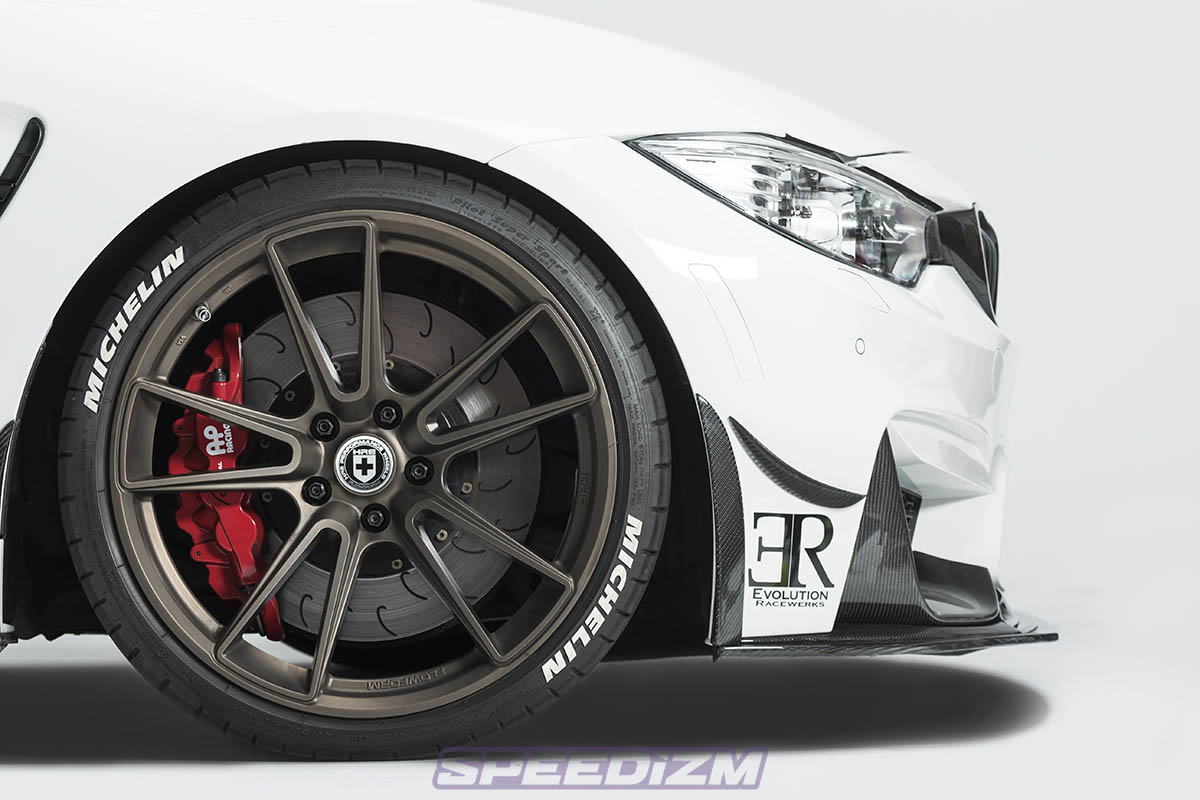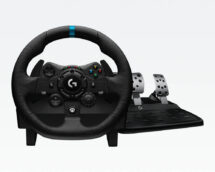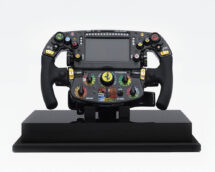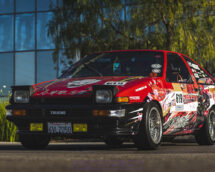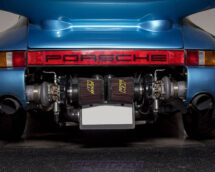There’s no need to reinvent the wheel when you’re looking for new rollers.
One of the simplest ways to customize your car, either for looks, performance, or both, is by upgrading your wheels. They’re often the first upgrade owners pursue, and as a result there are countless companies out there jostling with one another for the chance to sell you a set. There is also a lot of variation in materials, design, manufacturing methods, and overall quality, not to mention price. Here, we’re going to learn the basics you absolutely need to know before you go shopping for wheels.

Sizing it Up
Let’s begin with a few key terms. Diameter and width should be self-explanatory – an 18-inch wheel will accept an 18-inch tire, and no other diameter. Width, on the other hand, has some flexibility. Tire manufacturers publish data for each of their tires that show the range of widths approved for that size, with a ‘measured’ width listed that shows what size wheel the tire was measured on. For instance, you might have a tire with approved wheel widths from 9 to 11 inches, measured on a 9.5 inch rim for the published tread width (the distance from one edge of the tread blocks to the other) and section width (the widest part as measured across the sidewalls.)

While it’s possible to mount a tire of the correct diameter on a wheel that’s much too narrow (“pinched”) or too wide (“stretched”), it’s generally a very bad idea. In addition to issues with bead retention (keeping the tire sealed to the wheel), it also defeats the engineering that goes into tire sidewall construction and will lead to erratic handling.

Next up is the bolt circle. This is the pattern of holes in the wheel hub that has to match the pattern of lug nuts or bolts on the car’s wheel hubs. The first number is how many lugs or bolts the wheel hub takes, while the second is the diameter of the circle that runs through the center of all the lugs. You’ll hear numbers like “5 on 4 and a half” (five lugs on a 4.5-inch bolt circle) or “4 on 100mm” (four lugs on a 100mm bolt circle.) Some wheel designs, primarily for four-lug hubs, will have two different bolt circles allowing one part to fit a larger number of applications.

Finally, there is offset, backspacing, and pad height, all of which are interrelated and refer to where the wheel mounts to the hub relative to the “barrel” of the wheel rim. A wheel with zero offset will have the mounting face exactly in line with the wheel centerline. Since backspacing is the distance between the mounting face and the inner edge of the wheel, in this case the backspacing will be exactly half the wheel diameter.
- Example: A 10-inch wide wheel with zero offset will have a 5-inch backspace measurement.
Positive offset means that the centerline of the wheel is closer to the middle of the car than the mounting pad. This makes for a wheel with a “shallow” appearance, but it’s often necessary for FWD or AWD cars that have a lot going on in the wheel hub area and need the clearance.
- Example: A 10-inch wide wheel with a 2-inch positive offset will have a 7-inch backspace measurement.
Negative offset (you guessed it!) moves the mounting pad closer to the car than the centerline of the wheel, and gives that “deep dish” appearance. It’s most often seen with muscle cars that don’t have a lot of brake hardware, CV joints, steering linkages, or suspension arms vying for space inside the wheel diameter.
- Example: A 10-inch wide wheel with a two-inch negative offset will have a 3-inch backspace measurement.
Finally there is pad height. This is a little tougher to explain, but in simple terms it represents how the mounting pad of the wheel center relates to where the spokes connect to the barrel of the wheel. A wheel with low pad height will have relatively ‘flat’ spokes, while one with a high pad height will generally have a more curved profile to the spokes. Two wheels with the same size, offset, and backspacing can have different pad heights, and one wheel casting or center forging can be machined to a variety of different offsets by altering the pad height.

So what’s the point of pad height? A high pad provides the most clearance between the spokes of the wheel and brake calipers or other components, at the expense of having more material in the spokes themselves, because they have to be longer and more curved than a wheel with low pad height.
It’s All Material
The majority of wheels on the market are made from one or more of just three different materials – steel, aluminum, and magnesium. While there are more exotic materials like carbon fiber composites that have been successfully used for road wheels, they tend to be heart-stoppingly expensive due to their custom nature and the difficulties in attempting mass production. For now, we’ll stick with the Big Three, as they’re 99.9% of the market.

Steel is strong, durable, inexpensive, repairable (within limits), and it also lends itself to multiple forming techniques (which we will get into in a subsequent section). It’s also heavy, and as a result its use in aftermarket wheels is generally confined to applications like circle track racing, where durable, cheap wheels are more important than saving a pound here and there, or specific components of multi-piece wheels.

Aluminum, while more expensive than steel, is also lighter, and can be easily cast, forged, spun, and machined into practically any shape desired. It’s less forgiving of impacts, though, and far more difficult to repair when the damage is more than just cosmetic. Metallurgists have created countless aluminum alloys – by altering the composition of trace additives to the pure metal and varying the heat treatment, it’s possible to tailor the properties of the finished product to make it better suit the intended application. It’s the primary material used for both OEM and aftermarket wheels.

Finally, there’s magnesium. Less dense than aluminum, it offers reduced weight, but at increased cost. It also needs better protection from corrosion than aluminum, and has the charming property of burning very energetically under the right circumstances. Powdered magnesium is often used in flares and pyrotechnics, and once a chunk of solid magnesium reaches ignition temperature, you better have either a very expensive Class D fire extinguisher or a bucket of sand handy, because spraying it with water just releases hydrogen gas, and a CO2 fire extinguisher will actually make it burn faster. Despite these drawbacks, automotive manufacturers have used magnesium alloys in wheels, engine blocks, and even body panels where weight is a primary concern.

Picking Up The Pieces
The last aspect to consider is construction. Setting aside stamped-steel wheels like the kind you find in the trunk wrapped with a ‘space saver’ spare, the least expensive manufacturing method is casting. In its simplest form, a mold is created, and molten metal (usually aluminum, but there are cast magnesium wheels as well) is poured into that mold to create a one-piece wheel. Certain additional techniques can be used, like spin-casting or casting under pressure, to reduce the porosity and increasing the density of the finished wheels by removing trapped gasses. With modern sand-casting methods, it’s possible to create wheels with very intricate designs and high quality. It’s also possible to create highly questionable wheels very, very cheaply by casting, so this is one case where “you get what you pay for” holds a lot of truth.

Casting is also widely used to create center sections for multi-piece wheels. In these designs, the outer barrel is created in either a single piece, usually by spin-forming aluminum, or in an inner and outer half. The barrel is then either welded or bolted to the center. 2- and 3-piece wheels offer a manufacturer the ability to ‘mix and match’ different rim widths with different centers without having to carry a complete part number for every combination of width, offset, and bolt pattern they want to offer. Multi-piece wheels are so ubiquitous in racing that some manufacturers make much cheaper cast one-piece lookalike wheels that are detailed right down to the fake, cast-in bolt heads for the fasteners around the rim.

A step above casting in terms of both quality and price is forging. This is a process where a ‘slug’ of the metal to be formed (usually aluminum) is heated short of the melting point, but enough to make it somewhat pliable under pressure. Then, the slug is struck in an enormous press with a number of different dies, using very high stamping force. It will take several dies to forge the raw metal into the desired shape, especially in one-piece wheel designs, with each step progressively moving material to where it needs to be.

In addition to making complete wheels via forging, it’s also a popular technique to manufacture center sections for high-quality multi-piece wheels. The forging process produces an end product with an internal grain structure that ‘flows’ along lines of stress concentration, and can be as much as 40 percent lighter than a cast wheel of similar strength. Forging is a very resource-intensive process, involving 6,000 ton presses and very precise tooling which is expensive to create and has a limited service life. This explains why forgings are more costly at retail, but for buyers who want the lightest, strongest wheels possible, the extra expense is justified.

Choose Your Own Adventure
For some people, simply replacing their car’s stock wheels with OEM take-offs from a higher-trim version is enough. For others, nothing but semi-custom forged race-spec wheels will do. In between, there’s a plethora of options, from simple plus one fitments where you go up an inch in wheel diameter with a lower-profile tire to maintain the same outside dimensions (and avoid any fitment issues) to the time-honored message board question, “What’s the biggest tire and wheel I can fit on X car?”

As with so many things about project cars, many problems will be avoided when purchasing wheels with a little planning and clear-headed analysis of how you intend to actually drive your car, what will reasonably fit and what will require fender and/or suspension modification, if you are scrupulous about wheel care and avoiding curb rash, and of course what your realistic budget is. We’ve scratched the surface here, but there’s a lot more to learn; do your homework now, or be prepared to pay in tears and treasure later.

